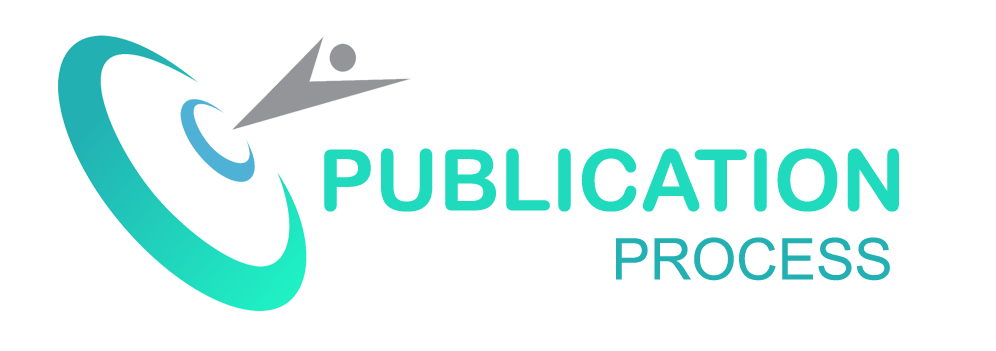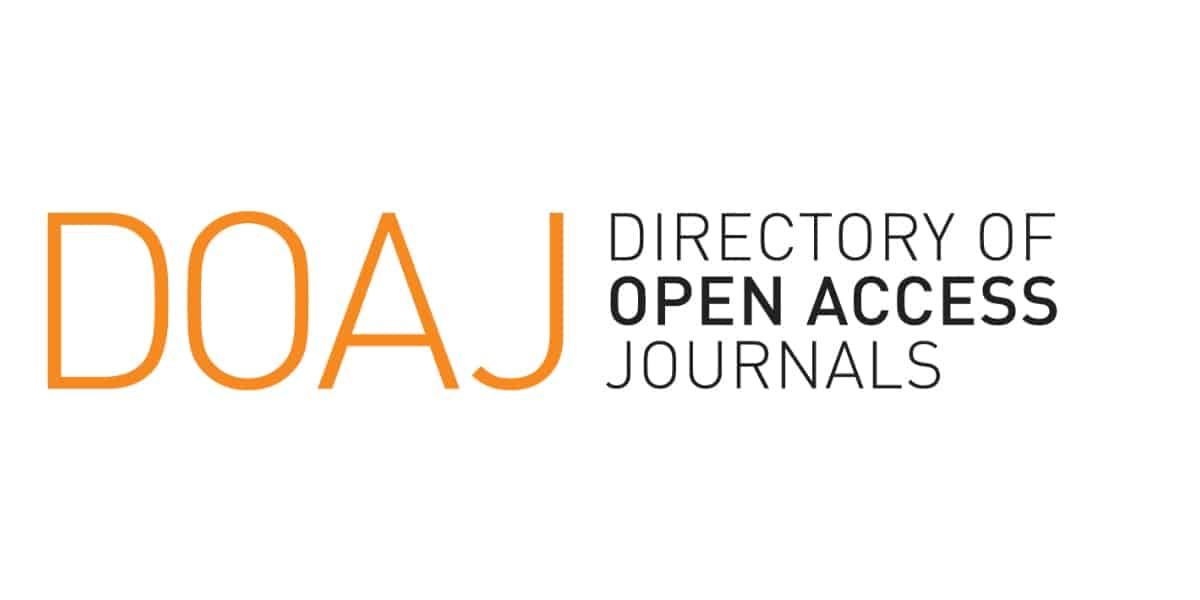Pengaruh Employer Branding dan E-Recruitment terhadap Intention to Apply (Studi pada Program MAP GROW Batch 6)
DOI:
https://doi.org/10.36805/manajemen.v10i2.9984Keywords:
employer branding, e-recruitment, intention to apply a jobAbstract
The retail industry will face systemic challenges, one of which is a labor shortage. Generation Z, with work expectations different from previous generations, presents a new challenge for companies in attracting, developing, and retaining talent. PT Mitra Adiperkasa Tbk (MAP), as a leading retail company in Indonesia, has partnered with the Kampus Merdeka program through the Magang dan Studi Independen Bersertifikat (MSIB) program since 2021 with a program called MAP GROW. This study aims to measure the influence of employer branding and e-recruitment on the intention to apply for the MAP GROW Batch 6 program. The research method used is descriptive and verificative quantitative, with data collected through questionnaires distributed to 112 applicants of the MAP GROW Batch 6 program. The sampling technique used is purposive sampling, and data analysis was conducted using correlation coefficient analysis, multiple linear regression, and coefficient of determination, as well as hypothesis testing through the F-test and t-test. The research results indicate that employer branding and e-recruitment have been effectively implemented in the MAP GROW Batch 6 program, as reflected in the high number of applicants representing the intention to apply. Additionally, both variables have a positive and significant effect on the intention to apply, both simultaneously and partially, with e-recruitment having a greater influence. These findings suggest that optimal employer branding and e-recruitment strategies can enhance the intention to apply to a company.
Downloads
References
Acikgoz, Y. (2019). Employee recruitment and job search: Towards a multi-level integration. Human Resource Management Review, 29(1), 1–13. https://doi.org/10.1016/j.hrmr.2018.02.009
Ambler, T., & Barrow, S. (1996). The employer brand. Journal of Brand Management, 4(3), 185–206. doi:10.1057/bm.1996.42
Ananda, P. J. & Santosa, A. (2024). Pengaruh E-Recruitment, Media Sosial, dan Employer Branding Terhadap Minat Generasi Z untuk Melamar Pekerjaan. Journal of Business and Halal Industry, 2(3), 1-16
Barbier, C., & Larguier, S. (2022). Non LinkedIn based e-recruitment Investigating the Degree to which French Students Would Adopt non-LinkedIn based E-recruitment Websites. https://www.theseus.fi/bitstream/handle/10024/852374/Barbier_Larguier.pdf?sequence=2&isAllowed=y
Barber, A. (1998). Recruiting Employees: Individual and Organizational Perspectives. Thousand Oaks, CA: SAGE Publications, Inc.
Baum, T. (2019). A changing world of work. What can we learn from the service sector about employing Millennials (and Gen Z)? Organizational Dynamics, 49(3). https://doi.org/10.1016/j.orgdyn.2019.04.001
Bejtkovsky, J. Rozsa, Z. & Mulyaningsih, D. H. (2018). A Phenomenon of Digitalization and E-Recruitment in Business Environment. Polish Journal of Management Studies, 18(1). https://doi.org/10.17512/pjms.2018.18.1.05
Berthon, P., Ewing, M., & Hah, L. L. (2005). Captivating company: dimensions of attractiveness in employer branding. International Journal of Advertising, 24(2), 151–172. https://doi.org/10.1080/02650487.2005.11072912
Carlini, J., Grace, D., France, C., & Lo Iacono, J. (2019). The corporate social responsibility (CSR) employer brand process: integrative review and comprehensive model. Journal of Marketing Management, 1–24. https://doi.org/10.1080/0267257X.2019.1569549
Ciptagustia, A., & Kusnendi. (2022). The dimension of Employer Branding and Employee Value Proposition at Academic Community Perspetive. The International Journal Business Review (The Jobs Review). 5 (2). https://doi.org/10.17509/tjr.v5i2.51860
Coelho, M. P., Cesário, F., Sabino, A., & Moreira, A. (2022). Pro-Environmental messages in job advertisements and the Intentions to Apply—The mediating role of organizational attractiveness. Sustainability, 14(5), 3014. https://doi.org/10.3390/su14053014
Creswell, J. W. & Creswell, J. D. (2018). Research Design (Fifth Edition). Los Angeles: SAGE
Dabirian, A., Berthon, P., & Kietzmann, J. (2019). Enticing the IT crowd: employer branding in the information economy. Journal of Business and Industrial Marketing, 34(7), 1403–1409. https://doi.org/10.1108/jbim-11-2018-0333
Deloitte & Network of Executive Women. (2019). Generation Z. https://www2.deloitte.com/content/dam/Deloitte/us/Documents/consumer-business/welcome-to-gen-z.pdf
Deloitte. (2024). 2024 Gen Z and Millennial Survey: Living and working with purpose in a transforming world. Deloitte; Deloitte. https://www.deloitte.com/content/dam/assets-shared/docs/campaigns/2024/deloitte-2024-genz-millennial-survey.pdf?dlva=1
Dessler, Garry. (2017). Human Resource Management (Fifteenth Edition). New York: Pearson
Ding, Y. (2023). Exploring the Attractiveness of Companies Branding D&I to Potential Employees in Online Recruitment. Psychology Research. 13 (11), 542-576 https://doi.org/10.17265/2159-5542/2023.11.005
Eger, L., Mičík, M., Gangur, M., & Řehoř, P. (2019). Employer Branding: Exploring attractiveness dimensions in a multicultural context. Technological and Economic Development of Economy. https://doi.org/10.3846/tede.2019.9387
Ekwoaba, J., Ikeije, U., & Ufoma, N. (2015). THE IMPACT OF RECRUITMENT AND SELECTION CRITERIA ON ORGANIZATIONAL PERFORMANCE. Global Journal of Human Resource Management, 3(2), 22–33. https://api-ir.unilag.edu.ng/server/api/core/bitstreams/1f8f315c-406f-407f-b7a4-c69723e0e118/content
Elbendary, I., Elsetouhi, A.M., Marie, M. and Aljafari, A.M. (2024), "A mixed-methods approach for the relationship between organizational attributes, reputation, employer brand and intention to apply for a job vacancy", Personnel Review, Vol. 53 No. 5, pp. 1244-1268. https://doi.org/10.1108/PR-03-2021-0188
El-Menawy, S. M. A., & Saleh, P. S. (2023). How does the mediating role of the use of social media platforms foster the relationship between employer attractiveness and generation Z intentions to apply for a job? Future Business Journal, 9(1). https://doi.org/10.1186/s43093-023-00233-0
Erlinda, F. & Safitri, R. (2020). The Relationship Between Employer Branding, Corporate Reputation, and Recruitment Web on Intention to Apply. Jurnal Ekonomi Syariah Teori dan Terapan, 7(8)
Ghimire, B., Upadhyay, J., Joshi, S. P., & Subedi, S. (2024). Analyzing the Cognitive Approach of Nepali Youth Job Seekers towards Online Recruitment. ResearchGate. https://www.researchgate.net/publication/379341667_Analyzing_the_Cognitive_Approach_of_Nepali_Youth_Job_Seekers_towards_Online_Recruitment
Goldstein, H. W., Pulakos, E. D., Passmore, J., & Semedo, C. (2017). The Wiley Blackwell Handbook of the Psychology of Recruitment, Selection and Employee Retention. United Kingdom: John Wiley & Sons Ltd
Gupta, S., & Saini, G. K. (2018). Information Source Credibility and Job Seekers’ Intention to Apply: The Mediating Role of Brands. Global Business Review, 097215091877891. doi:10.1177/0972150918778910
Hada, B. S. & Gairola, S. (2015). Opportunities & Challenges of E-Recruitment. Journal of Management Engineering and Information Technology, 2(2)
Highhouse, S., Lievens, F., & Sinar, E. F. (2003). Measuring Attraction to Organizations. Educational and Psychological Measurement, 63(6), 986-1001. https://doi.org/10.1177/0013164403258403
Hosain, Sajjad and Ullah, Kazi and Khudri, Md. Mohsan. (2016). The Impact of E-Recruitment on Candidates’ Attitudes: A Study on Graduate Job Seekers of Bangladesh. Journal of Human and Social Science Research; Vol. 08 (01), 2016, 009-017, ISSN 2331-4974, Available at SSRN: https://ssrn.com/abstract=2786911
Junça Silva, A. and Dias, H. (2023), "The relationship between employer branding, corporate reputation and intention to apply to a job offer", International Journal of Organizational Analysis, Vol. 31 No. 8, pp. 1-16. https://doi.org/10.1108/IJOA-01-2022-3129
Khan, R. N. (2017). Relationship between Reputation Perception and Job Pursuit Intention in Private Sector. International Journal of Economics & Management Sciences, 06(03). https://doi.org/10.4172/2162-6359.1000422
Kucherov, D., & Tsybova, V. (2021). The contribution of e-recruitment practices to e-recruitment outcomes in Russian companies. Measuring Business Excellence, 26(3), 366–377. https://doi.org/10.1108/mbe-02-2021-0017
Landers, R. N. & Schmidt, G. B. (2016). Social Media in Employee Selection and Recruitment. USA: Springer
Lestari, D., & Manggiasih, T. (2023). The Effect of Employer Branding and E-recruitment on the Intention to Apply for a Job in Z Generation. Asian Journal of Economics, Business and Accounting. 23 (19), 1-8.
Liu, Y., Keeling, K. A., & Papamichail, K. N. (2015). Should retail trade companies avoid recruiting maximisers? Management Decision, 53(3), 730–750. https://doi.org/10.1108/md-06-2014-0402
Maheshwari, V., Gunesh, P., Lodorfos, G., & Konstantopoulou, A. (2017). Exploring HR practitioners’ perspective on employer branding and its role in organisational attractiveness and talent management. International Journal of Organizational Analysis, 25(5), 742–761. https://doi.org/10.1108/ijoa-03-2017-1136
Malhotra, R. S. & Sharma, (2015). Effect of E-Recruitment on Recruitment. International Journal of Management and Commerce Innovations, 3(2), 1047-1050. www.researchpublish.com
Malik, M. S., & Mujtaba, M. A. ul. (2018). Impact of E-Recruitment on Effectiveness of HR Department in Private Sector of Pakistan. International Journal of Human Resource Studies, 8(2), 80. https://doi.org/10.5296/ijhrs.v8i2.12869
Martocchio, J. J. (2019). Human Resource Management (Fifteenth Edition). New York: Pearson
Mello, J. A. (2015). Strategic Human Resource Management (Fourth Edition). USA: Cengage Learning
Ngoc, T. N., Dung, M. V., Rowley, C., & Bach, M. P. (2022). Generation Z job seekers’ expectations and their job pursuit intention: Evidence from transition and emerging economy. International Journal of Engineering Business Management, 14. https://doi.org/10.1177/18479790221112548
Okolie, U. C., & Irabor, I. I. (2017). E-Recruitment: Practices, Opportunities and Challenges. European Journal of Business and Management. 9 (11).
Lo Piccolo, E., Petruzziello, G., Chiesa, R., Pietrantoni, L., & Mariani, M. G. (2024). Fairness in E-Recruitment: Examining Procedural Justice Perceptions and Job Seekers’ Intentions. Sustainability, 16(18), 8124. https://doi.org/10.3390/su16188124
PricewaterhouseCoopers. (n.d.). Retail & consumer. PwC. https://www.pwc.com/id/en/industry-sectors/consumer-industrial-products-services/retail-consumer.html
Pucik, V., Evans, P., Björkman, I., & Morris, S. (2017). The Global Challenge: International Human Resource Management. Chicago: Chicago Business Press
Robbins, Stephen P., Judge, Timothy A. (2024). Organizational Behavior (Nineteenth Edition). New York: Pearson
Saini, G. K., & Jawahar, I. (2019). The influence of employer rankings, employment experience, and employee characteristics on employer branding as an employer of choice. Career Development International, 24(7), 636–657. https://doi.org/10.1108/cdi-11-2018-0290
Santiago, J. (2019). The relationship between brand attractiveness and the intent to apply for a job. European Journal of Management and Business Economics, 28(2), 142–157. https://doi.org/10.1108/ejmbe-12-2018-0136
Sharma, R., & Prasad, A. (2018). Employer brand and its unexplored impact on intent to join. International Journal of Organizational Analysis, 26(3), 536–566. https://doi.org/10.1108/ijoa-11-2017-1280
Sheehan, E. (2024, July 12). Global Retail Outlook 2024. Deloitte. https://www.deloitte.com/global/en/Industries/consumer/analysis/global-retail-outlook.html
Singh, A. P., & Dangmei, J. (2016). Understanding The Generation Z: The Future Workforce. South -Asian Journal of Multidisciplinary Studies (SAJMS). 3 (3).
Smythe, S., Grotlüschen, A., & Buddeberg, K. (2020). The automated literacies of e-recruitment and online services. Studies in the Education of Adults, 53(1), 4–22. https://doi.org/10.1080/02660830.2020.1855870
Soeling, P. D., Ajeng Arsanti, S. D., & Indriati, F. (2022). Organizational reputation: Does It Mediate the Effect of Employer Brand Attractiveness on Intention to Apply in Indonesia? Heliyon, 8(4), e09208. https://www.sciencedirect.com/science/article/pii/S2405844022004960
Sugiyono, P. D. (2019). Metode Penelitian Kuantitatif, Kualitatif dan R&D. Bandung: ALFABETA, cv.
Sugiyono, P. D. (2023). Statistika untuk Penelitian. Bandung: ALFABETA, cv.
Susilo, S. R., & Widhianto, C. W. (2023). EFFECT OF EMPLOYER BRANDING AND PRESTIGE ON INTENTION TO APPLY IN THE TOP 5 E-COMMERCE IN INDONESIA. Jurnal Ilmiah Bisnis Dan Ekonomi Asia. https://doi.org/10.32812/jibeka.v16i2.758
Tanwar, K., & Kumar, A. (2019). Employer brand, person-organisation fit and employer of choice. Personnel Review, 48(3), 799–823. https://doi.org/10.1108/pr-10-2017-0299
Teoh, W. M. (2013). Factors Influencing Perceptions of University Students Towards Internet Recruitment. Asian Academy of Management Journal 18(1):123-142
Thite, M. (2019). E-HRM: Digital Approaches, Directions & Applications. New York: Routledge
Tyagi, A. (2016). IMPACT OF E-RECRUITMENT ON HUMAN RESOURCE. Google Books. https://books.google.co.id/books?id=QMpJDwAAQBAJ&pg=PA1&hl=id&source=gbs_toc_r&cad=2#v=onepage&q&f=false
Wei, Y. C., Chang, C. C., Lin, L. Y., & Liang, S. C. (2016). A fit perspective approach in linking corporate image and intention-to-apply. Journal of Business Research, 69(6), 2220-2225. https://doi.org/10.1016/j.jbusres.2015.12.033.
Wijaya, C. N., Mustika, M. D., Bulut, S., & Bukhori, B. (2023). The power of e-recruitment and employer branding on Indonesian millennials’ intention to apply for a job. Frontiers in Psychology, 13(1). https://doi.org/10.3389/fpsyg.2022.1062525
Zurich (2024). Zurich Insurance. https://www.zurich.com/media/magazine/2022/how-will-gen-z-change-the-future-of-work
Downloads
Published
Issue
Section
License
Authors who publish in Jurnal Manajemen dan Bisnis Kreatif agree to the following terms:
- Authors retain copyright and grant the journal right of first publication with the work simultaneously licensed under a Attribution-ShareAlike 4.0 International (CC BY-SA 4.0) License that allows others to share the work with an acknowledgment of the work's authorship and initial publication in this journal.
- Authors are able to enter into separate, additional contractual arrangements for the non-exclusive distribution of the journal's published version of the work (e.g., post it to an institutional repository or publish it in a book), with an acknowledgment of its initial publication in this journal.
- Authors are permitted and encouraged to post their work online (e.g., in institutional repositories or on their website) prior to and during the submission process, as it can lead to productive exchanges, as well as earlier and greater citation of published work (See The Effect of Open Access).








